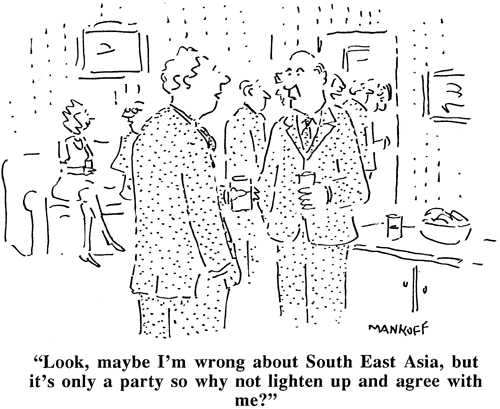
Air freight rates
made some gains in early September and there are
now signs of a build-up to peak season, on transpacific
lanes at least.
TAC Index recorded
a 5.23% week-on-week increase in rates from Hong
Kong to the U.S. on 10 September, with demand
thought to be buoyed by shippers bringing in cargo
ahead of a further of $200billion of tariffs expected
to be imposed imminently by the U.S. on Chinese
imports.
PVG
Rates Dip
Rates from PVG to
Europe were down 3.21% over the same time frame,
with demand from Europe still relatively weak,
although pricing has been steady for much of the
year on the lane.
The disparity between
transpacific and Asia-Europe air freight demand
largely mirrors the container shipping industry,
but it is unclear as yet how much of the mismatch
is down to early shipments in the U.S. to avoid
tariffs or relative economic health.
Most analysts suggest
it is likely a bit of both.
Export
China Continues
In dollar terms,
Chinese year-on-year export growth to the U.S.
rose 13.2% last month, up from 11.2% in July as
shippers front-loaded exports ahead of impending
new U.S. tariffs on $200 billion of produce, following
earlier tariffs of $50bn on Chinese exports. Chinese
export growth to the European Union, by contrast,
fell to 8.4% in August from 9.5% in July.
Sneak
Peak
 Nicola
Hughes, Air Cargo Business Development at Freight
Investor Services (FIS), said there were signs
of air freight markets building towards a traditional
peak season on both the Asia-Europe and Transpacific
lanes. Nicola
Hughes, Air Cargo Business Development at Freight
Investor Services (FIS), said there were signs
of air freight markets building towards a traditional
peak season on both the Asia-Europe and Transpacific
lanes.
“Freight forwarders
are already reporting constraints on capacity
availability on some lanes and are expressing
a desire to lock in volumes as soon as possible,”
she said.
An
Apple A Day
“Apple have
also announced the launch of three new models.
They will need to utilize air freight to get these
into shops which could tighten capacity in the
run up to Christmas, especially if they haven’t
already secured their freight space.”
FIS recently launched
two risk management products – the Index
Linked Agreement (ILA) and the Air Freight Forwarder
Agreement (AFFA) - designed to settle contracts
based on the TAC index, thereby enabling buyers
to better manage their air cargo rate price risk.
Strong
Start
On the Transpacific
lane, Hughes told Flying Typers that
rates had been rising as the peak import season
to the U.S. got off to a strong start, with some
shippers understood to be importing goods early
to avoid a third tranche of import tariffs on
Chinese products expected to be announced.
However, she said the TAC Index fell 1.05% in
the week to 10 September on the Asia–Europe
lane, pushing forecasts for Q4 peak pricing down
marginally.
What
Goes Down Goes Up
“Although
this week has seen rates go down, they are still
up compared with the same week in 2017 and 2016,”
she said.
“Additional
capacity on the Asia-Europe route, including Uni-top
Airlines’ new freighter which adds 330 tons
per week to the market, has eased the previous
capacity squeeze that was driving rates up.
“Europe’s
peak season usually comes two weeks after the
transpacific and is likely to start in the lead
up to China’s Golden Week at the start of
October.”
Yet while demand
and rates are showing signs of improving as Q4
approaches, it is also becoming clear that air
freight has had a challenging year so far.
FTKs
Fatigue
Annual growth in
air freight ton kilometers (FTKs) slowed to 2.8%
in the three months ended July – its slowest
pace on this basis in more than two years, according
to IATA Q32018 ‘Cargo Chartbook’ report
released this week.
“While FTKs
are continuing to increase in seasonally adjusted
terms, the upward trend has slowed markedly from
that seen during the best of the upturn in air
freight last year,” it reported
“This largely reflects the fact that the
inventory restocking cycle, which helped air freight
growth to outperform that of wider global trade
in 2016/17, has now run its course.
Protectionism
Impact
“More generally,
against a backdrop of rising trade protectionism
measures, wider momentum in world trade also looks
to be weakening.”
More positively,
so far during the second half of 2018 IATA said
cargo yields had trend upwards, albeit at a slower
pace than a year ago. “While the industry
wide load factor is trending down, ongoing high
rates of freighter aircraft utilization will continue
to help to reduce average costs, and to help offset
ongoing upward pressure on costs, particularly
from higher fuel prices,” it added.
SkyKing
|





 Vol.
17 No. 57
Vol.
17 No. 57 Vol.
17 No. 58
Vol.
17 No. 58


 Impacted
My Life
Impacted
My Life Günter’s
dear friend, the great Ralf Rainer Auslaender,
Managing Director of leisure Cargo remembers:
Günter’s
dear friend, the great Ralf Rainer Auslaender,
Managing Director of leisure Cargo remembers: A
Real Character
A
Real Character
 Nicola
Hughes, Air Cargo Business Development at Freight
Investor Services (FIS), said there were signs
of air freight markets building towards a traditional
peak season on both the Asia-Europe and Transpacific
lanes.
Nicola
Hughes, Air Cargo Business Development at Freight
Investor Services (FIS), said there were signs
of air freight markets building towards a traditional
peak season on both the Asia-Europe and Transpacific
lanes.
 Air
Cargo News FlyingTypers reserves the right to edit all submissions
for length and content. All photos and written material submitted to
this publication become the property of All Cargo Media.
Air
Cargo News FlyingTypers reserves the right to edit all submissions
for length and content. All photos and written material submitted to
this publication become the property of All Cargo Media.